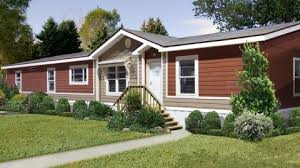Defining The Differences Ii: Manufactured Homes, Mobile Homes, Modular Homes, Tiny Homes And Park Models
For several decades the terminology referencing factory-built housing, as opposed to site-built housing, has long been confusing for homebuyers, the media, bureaucrats, the public at large, and to some extent, manufactured home salespersons and retailers.
The terms used for today’s factory-built housing range from mobile homes, (the most common and most inaccurate description), manufactured homes, modular homes, tiny homes and park models, and to a lesser extent; pre-fabricated homes (prefabs), panelized homes, container homes, and system-built homes. We will attempt to define the five (in bold print) that seem to be the most commonly misunderstood.
A home wholly or partially constructed in a factory environment, as opposed to a site-built home, is politically correct and broadly, if not legally, considered a – manufactured home – however, what type of a factory-built home may be confusing to those that do not understand the technically correct terminology used to define the building process.
The construction code requirements to produce these homes are what determines the differences. We will strive to define the differences and hopefully, “un-confuse the confused.” We will start with the one type of home that does not fit any of those modern-day categories – “mobile homes.”
MOBILE HOMES – “There have been zero mobile homes produced in over four decades! Say what? How can that be?” Yes, that is factual, as well as legally accurate. The term “mobile home” is often used interchangeably with the term “manufactured home,” but in fact they mean quite different things.
For decades the “mobile home” and “trailer home” were considered – one in the same – However, in the 1960’s the term “mobile home” became the industry’s preferred nomenclature as the “trailer” became less mobile with larger and better-built units more acceptable to home buyers seeking affordable housing. However, the stigma of substandard housing still persisted.
The “mobile home” was no longer produced after Congressional legislation in 1976, creating today’s modern high-quality manufactured housing, and technically and legally designating manufactured housing as the home being built today, and simultaneously eliminated “mobile homes” as a recognized form of new housing in the U.S.
MANUFACTURED HOMES – July 1976 was the implementation of a law passed by the U.S. Congress in 1974 titled: The Federal Construction and Safety Standards Act administered by the Department of Housing and Urban Development (HUD). The HUD Code regulates manufactured home design and construction, strength and durability, fire resistance, energy efficiencies, and overall quality. The HUD Code also sets performance standards for heating, plumbing, air conditioning, and thermal and electrical systems. Manufactured homes are the only form of single-family homes subject to a federally regulated nationwide building code.
MODULAR HOMES – are often produced in the same production facilities as HUD Code manufactured homes utilizing the same quality building efficiencies, materials, and floor plans.
Modular homes are built to be compliant with local and state building codes and architectural requirements for placement in “home-only zones.”
TINY HOMES – What is a tiny home? Most of those television depictions seem to indicate that it is a structure with under 400 square feet of living space. The size thresholds are subjective. There are no formal definitions for tiny homes in nationally recognized building codes.
Tiny homes have not boomed in the way cultural fascination with them would suggest – one reason? It’s exceedingly difficult to live in them legally.
Non-code tiny home financing is typically not available from traditional lenders, as there isn’t a conventional way to perfect a collateral lien on a non-recognized structure.
PARK MODEL RV’s – Several recognized manufactured home builders also build under 400 square feet Park Model RV’s that should be included in the preceding “tiny home” conversation. These units are generally constructed to a nationally recognized member construction code (ANSI-RVIA) that certifies the builder’s stringent adherence to health, safety, and road worthiness requirements.
Park models produced by manufactured home builders are skillfully designed to maximize comfortable living spaces and incorporate the same quality of construction of the larger HUD Code manufactured homes.
Quality constructed Park Models are welcome in recreational park communities, and campgrounds and are ideal for guest homes, accessory dwelling units (ADU’s), vacation homes, second homes, etc. However, there are no known under 400 square feet homes or recreational vehicles that will meet requirements as continuing permanent housing.









